
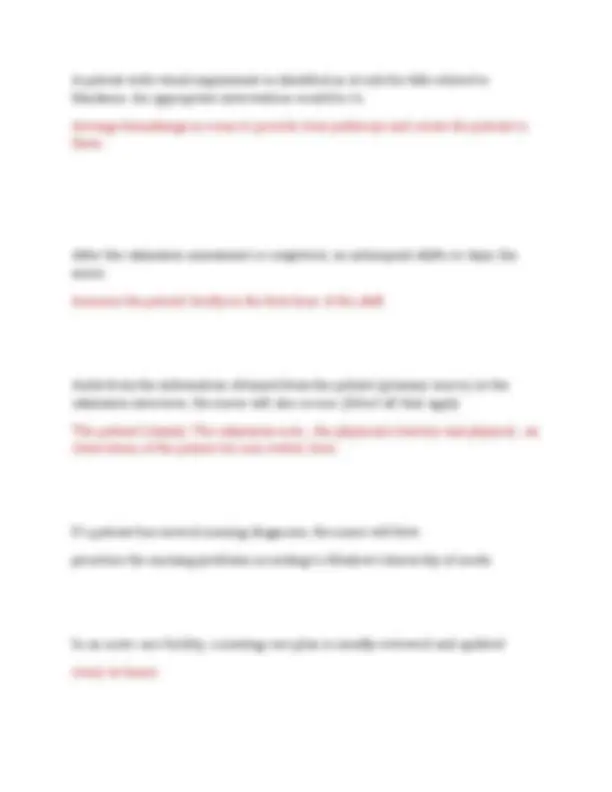

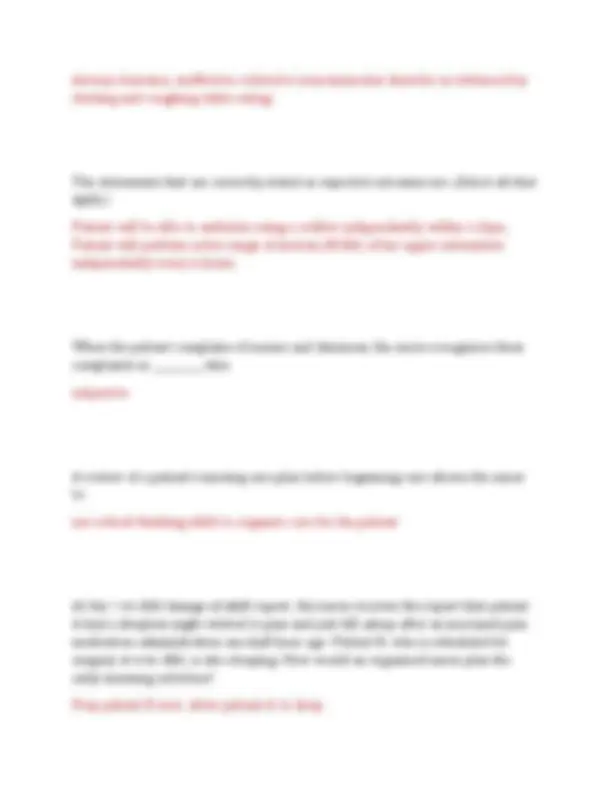
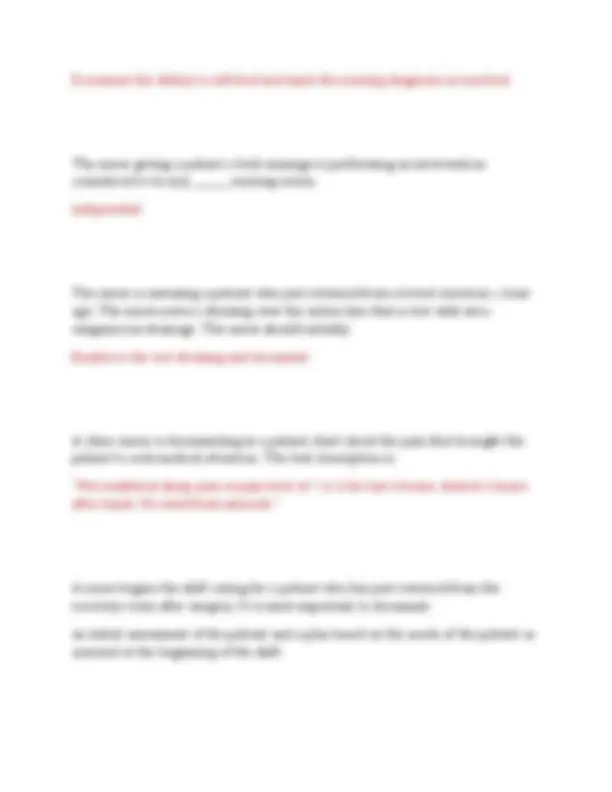
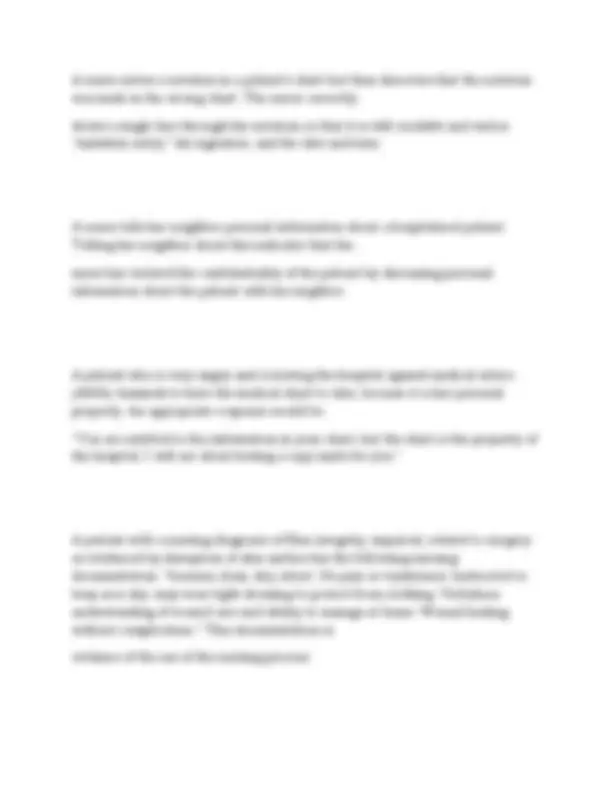
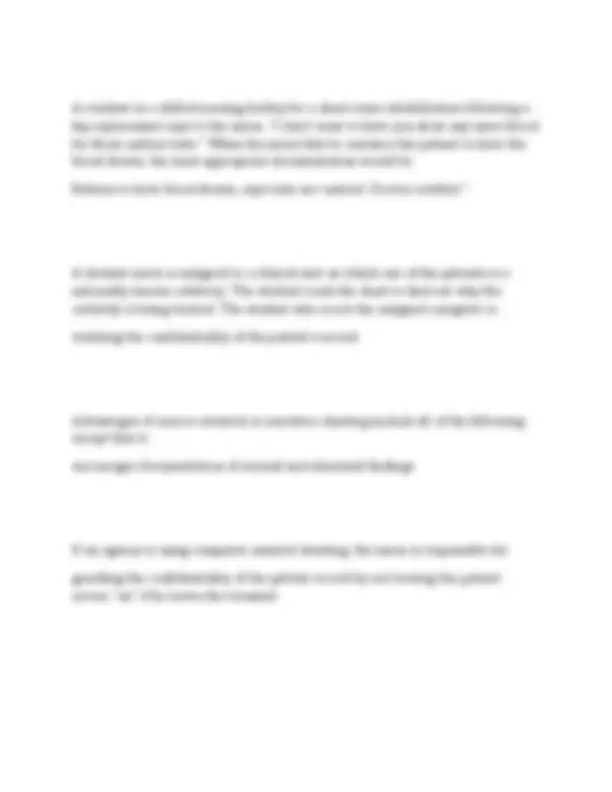
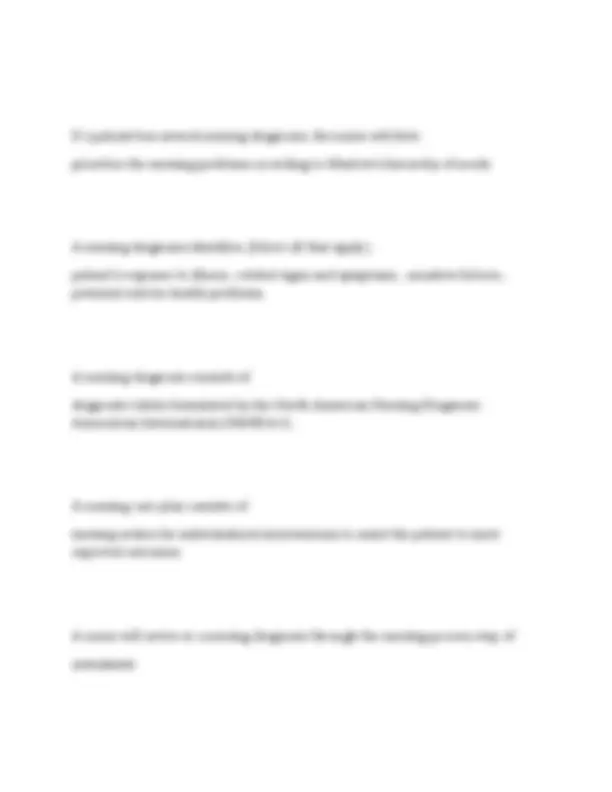
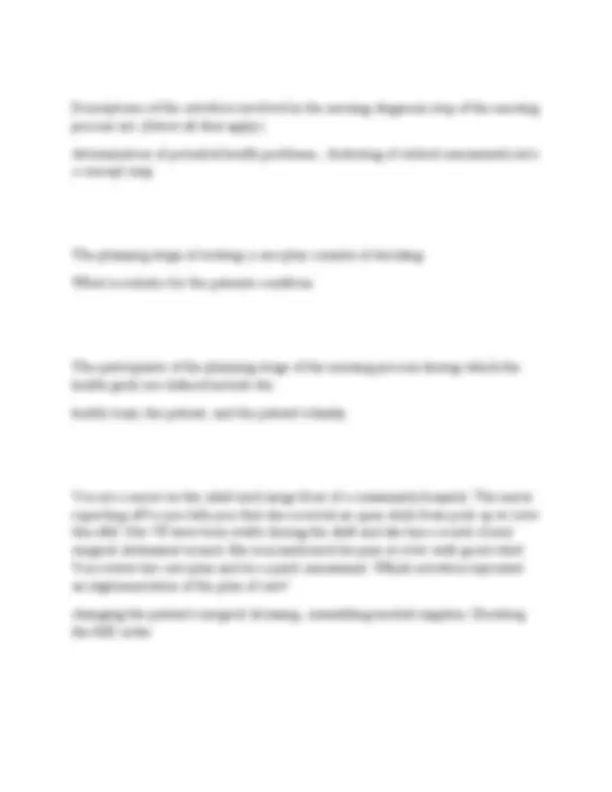
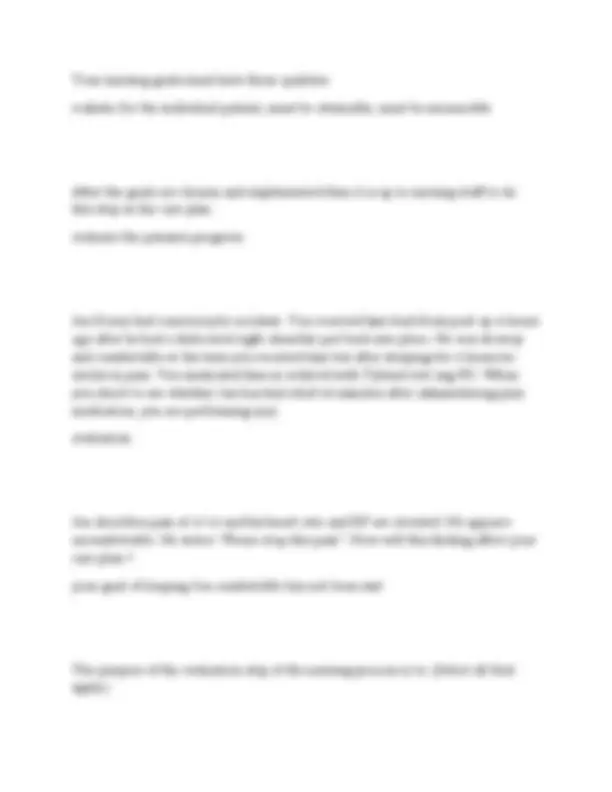
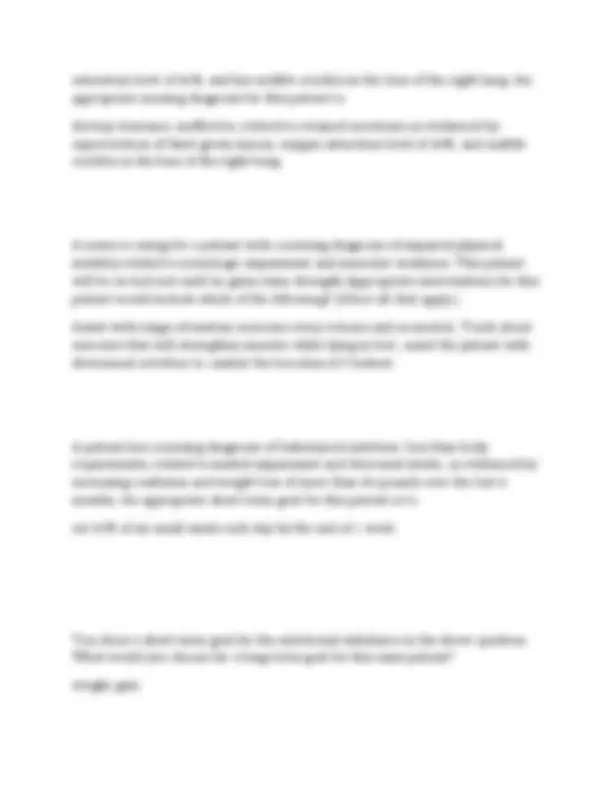
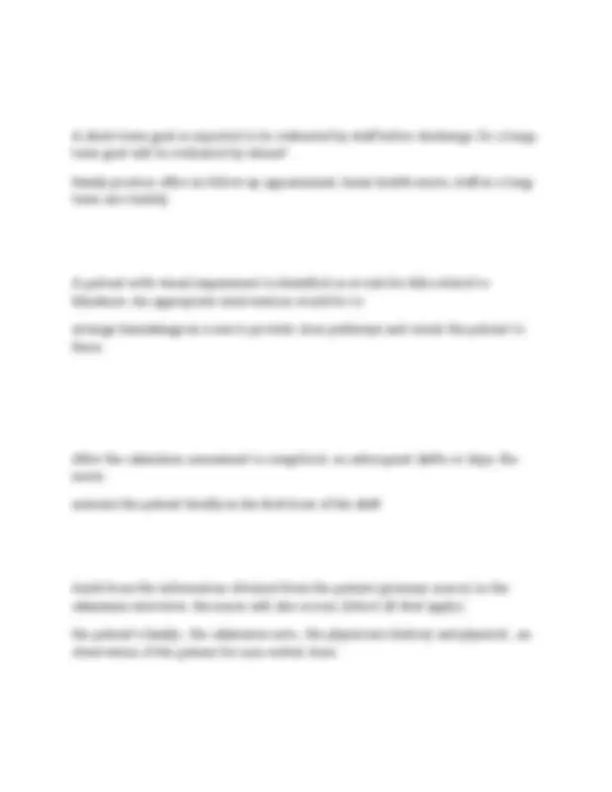
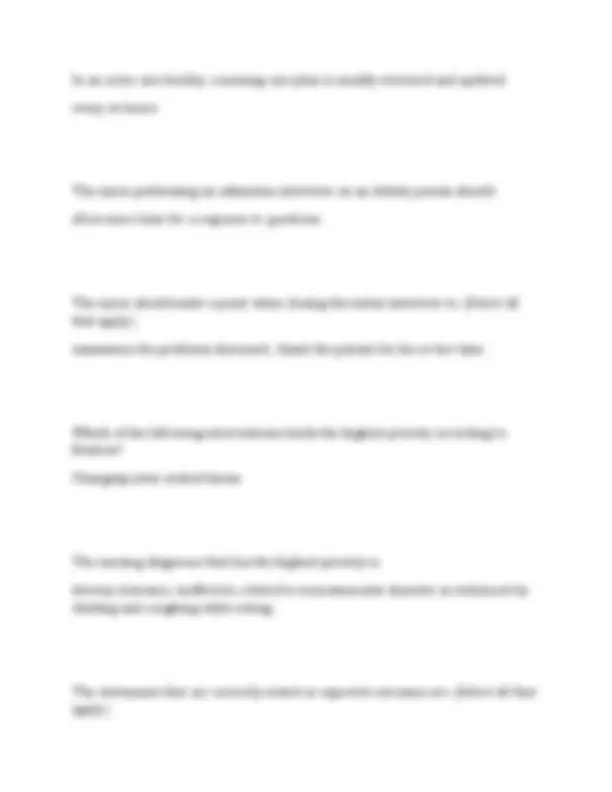
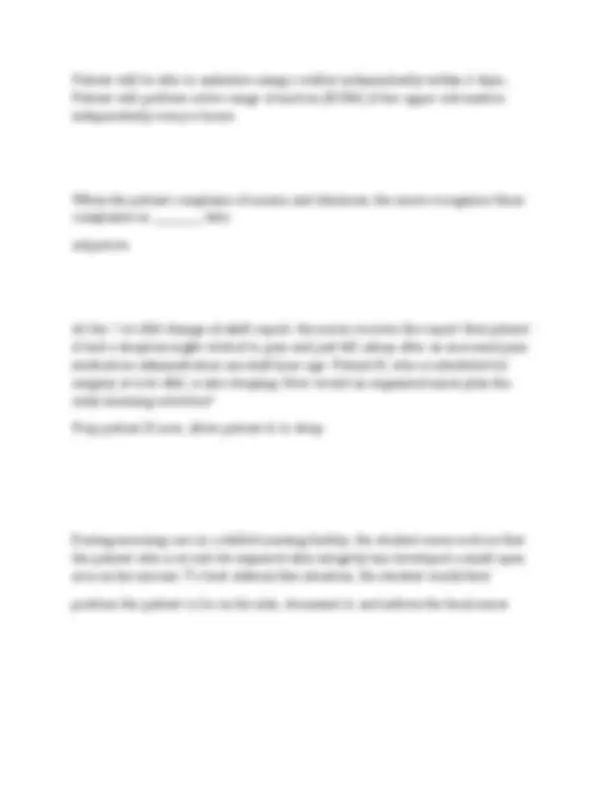
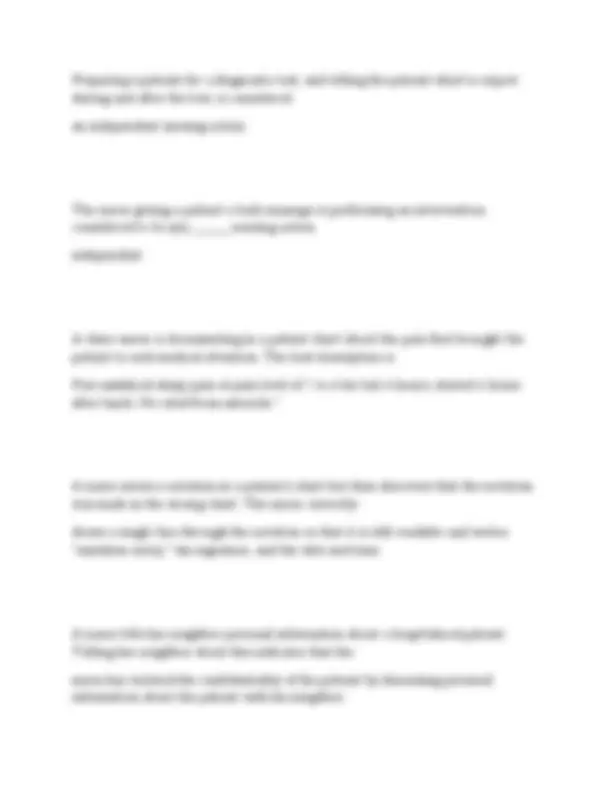
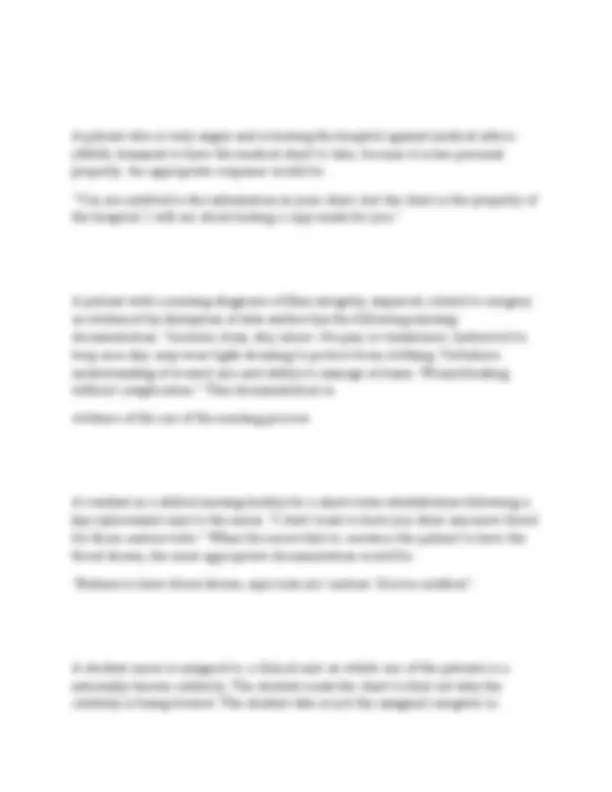
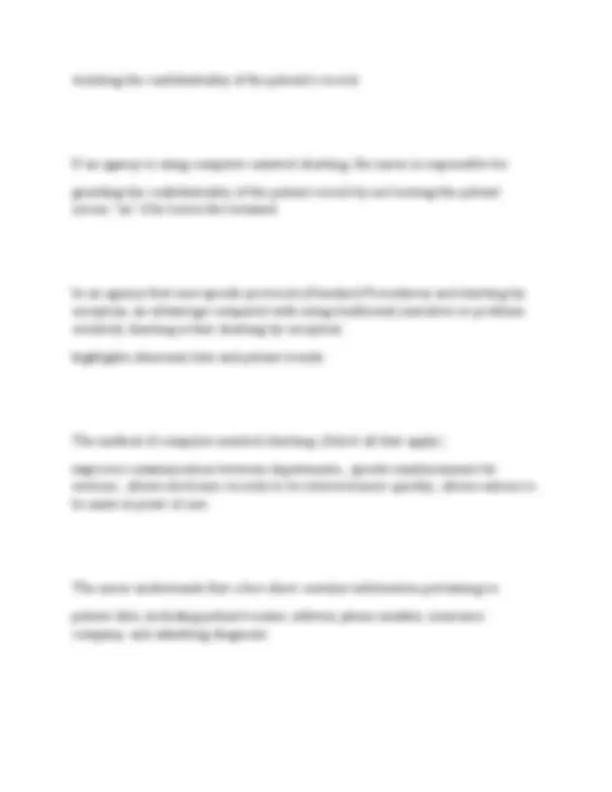
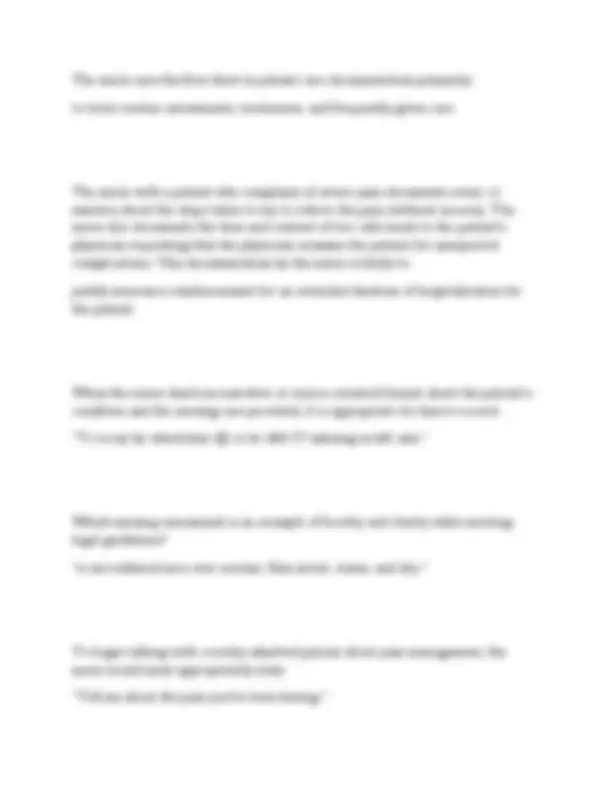
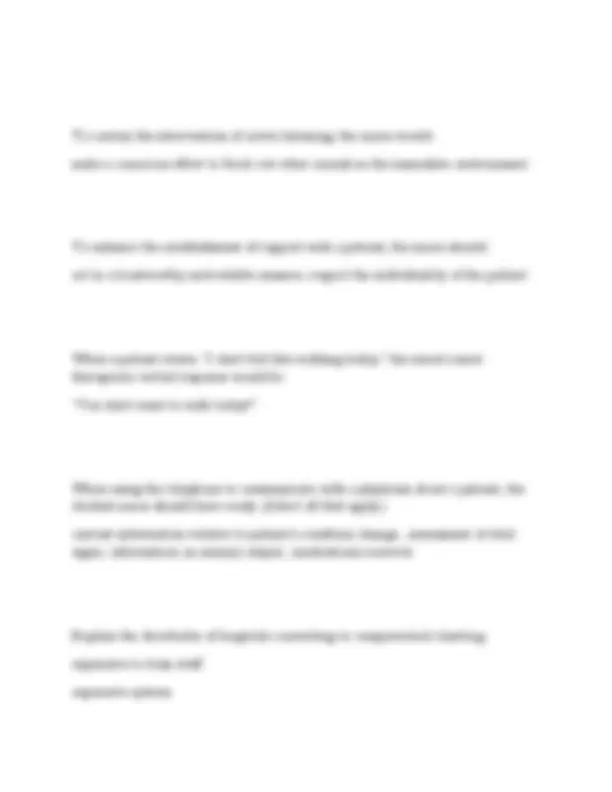
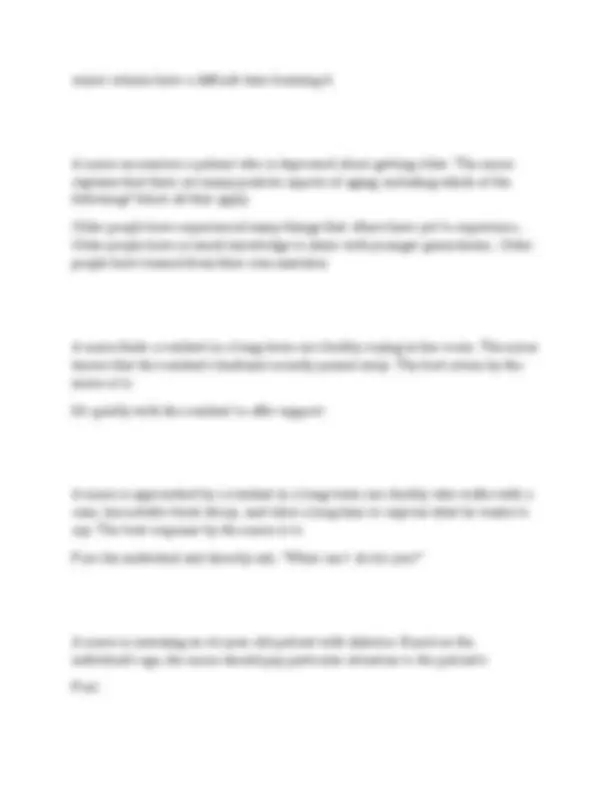
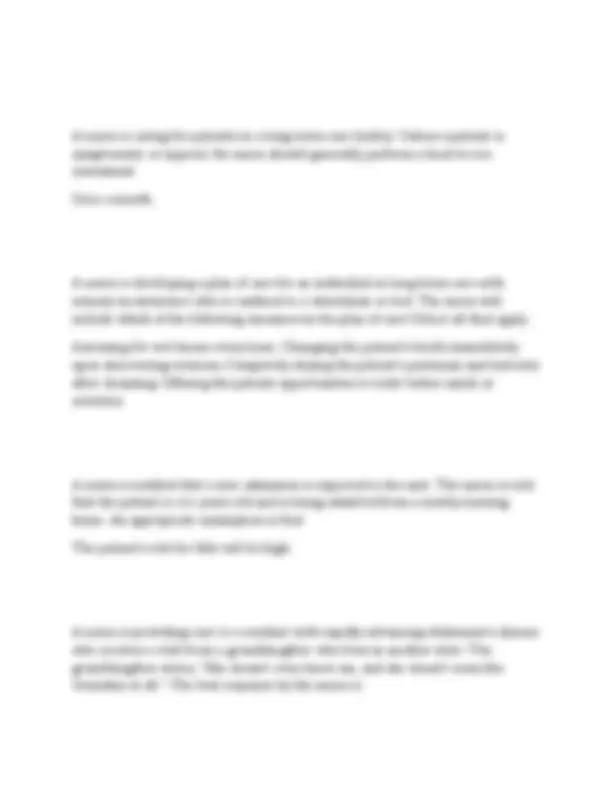
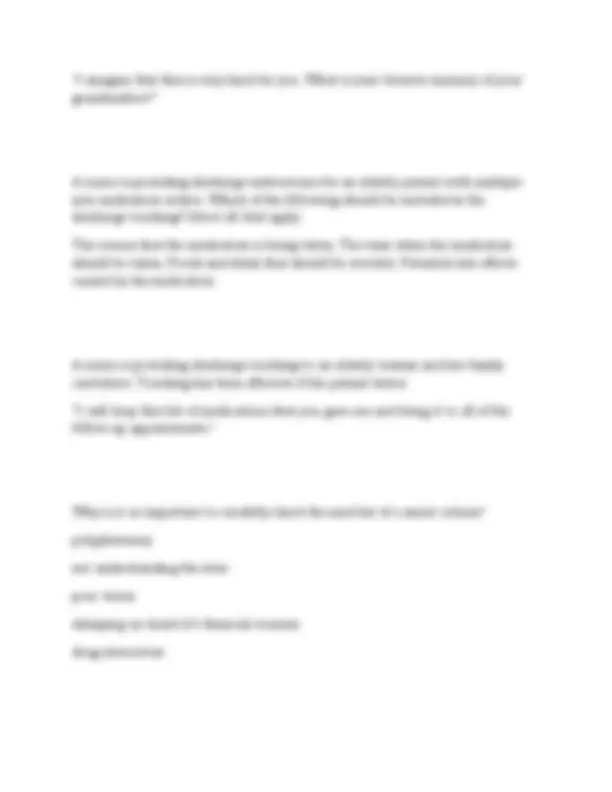
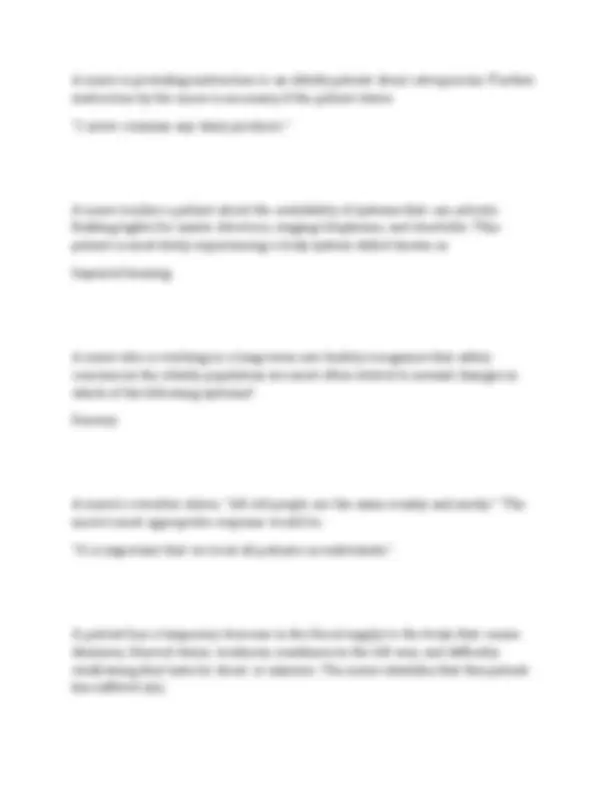
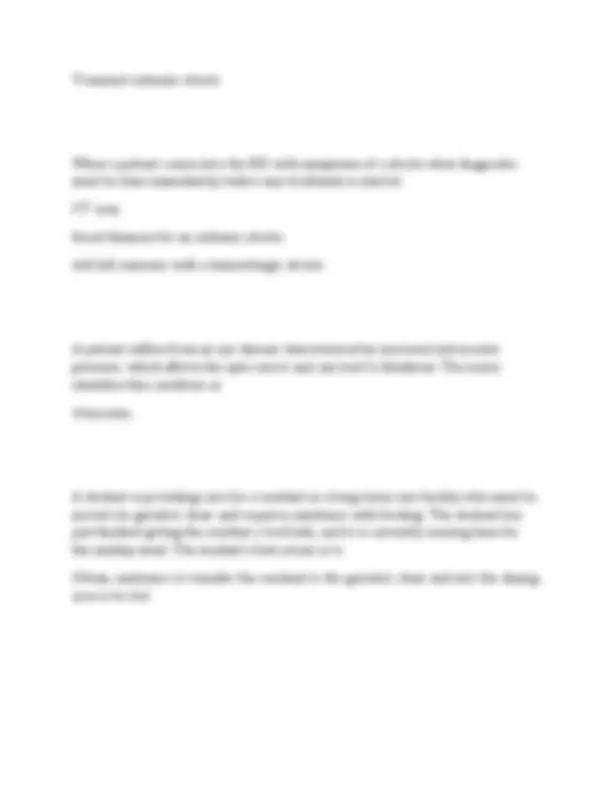
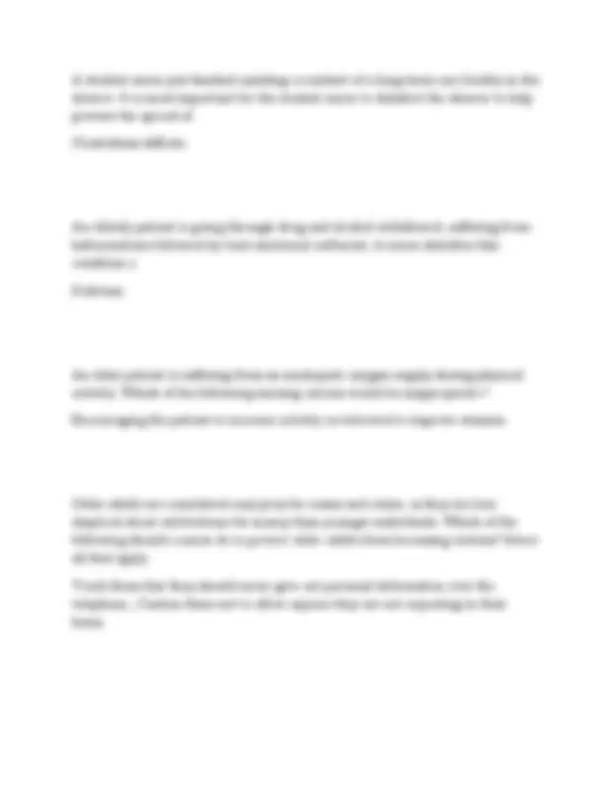
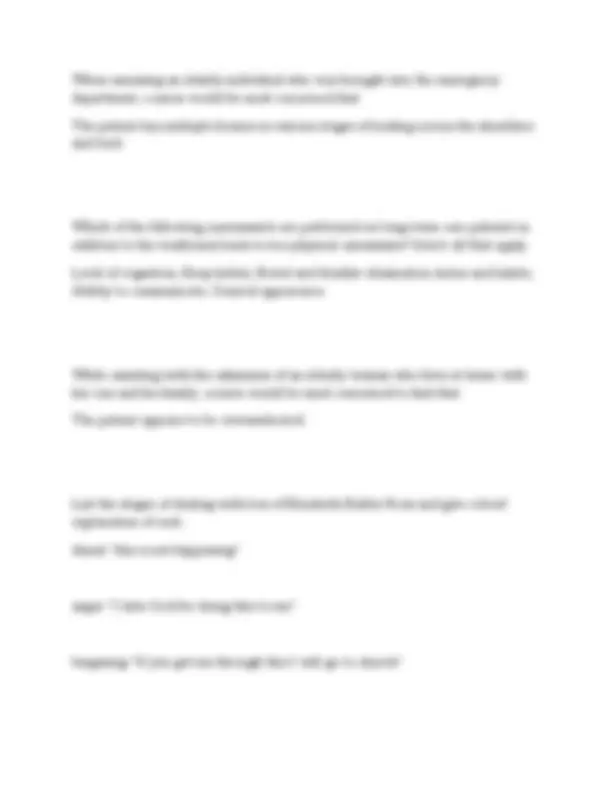
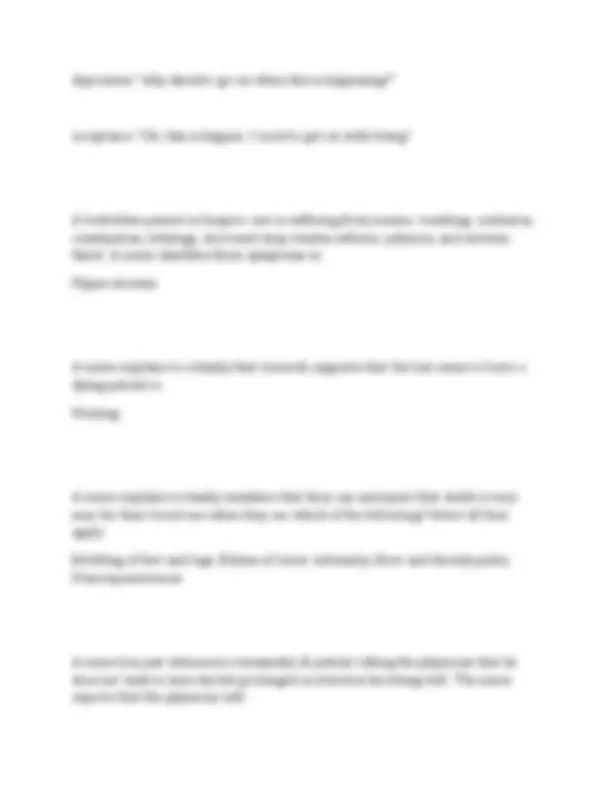
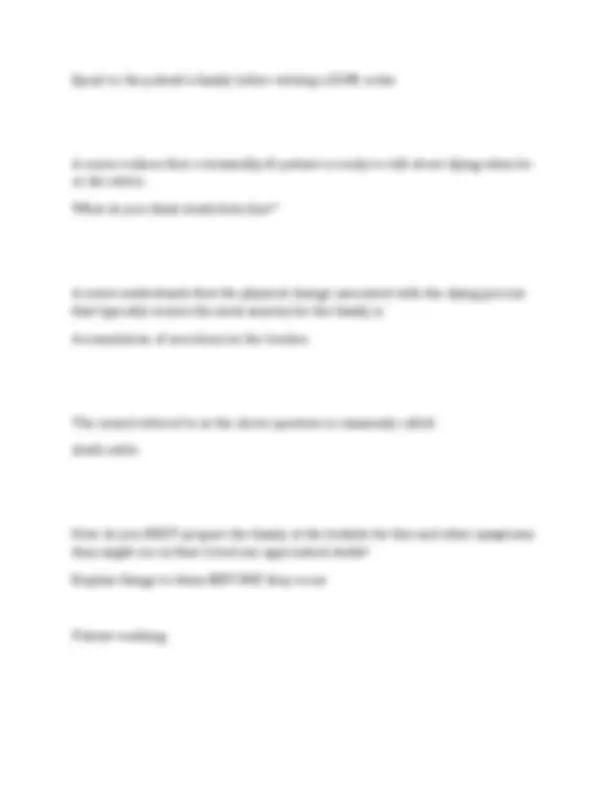
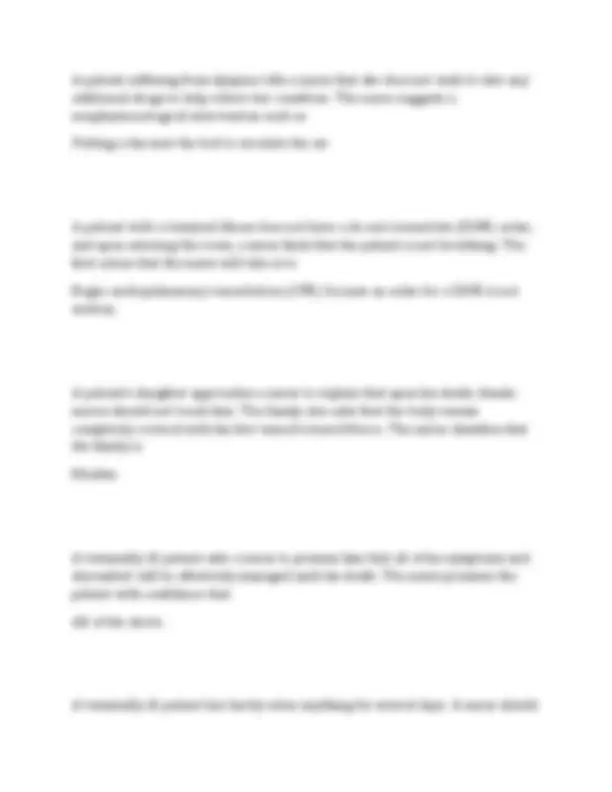
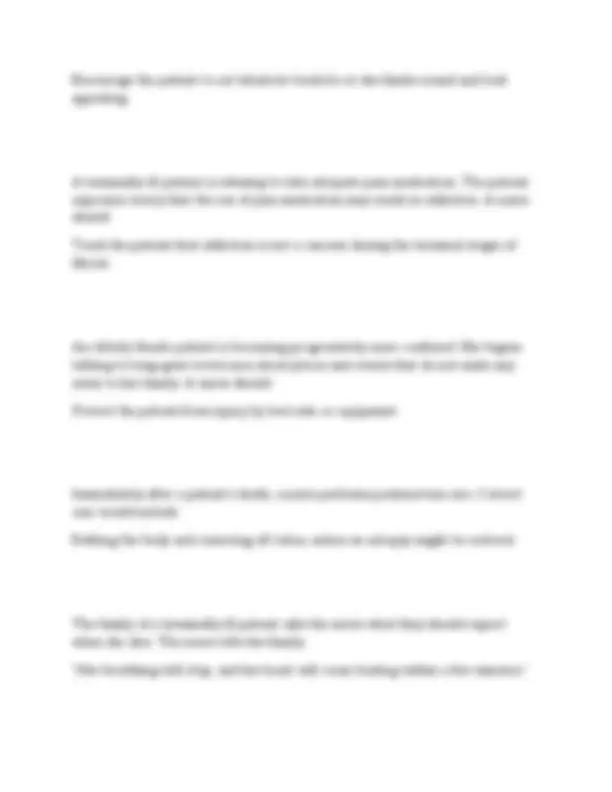
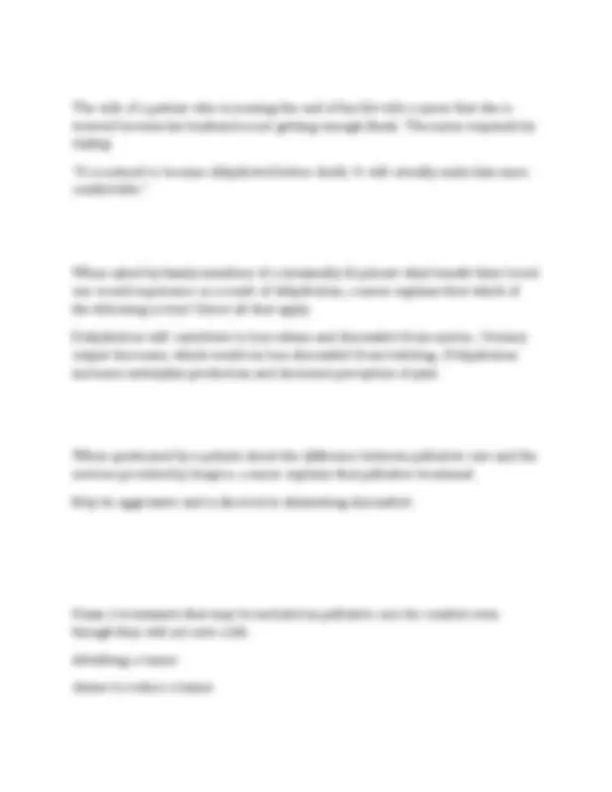
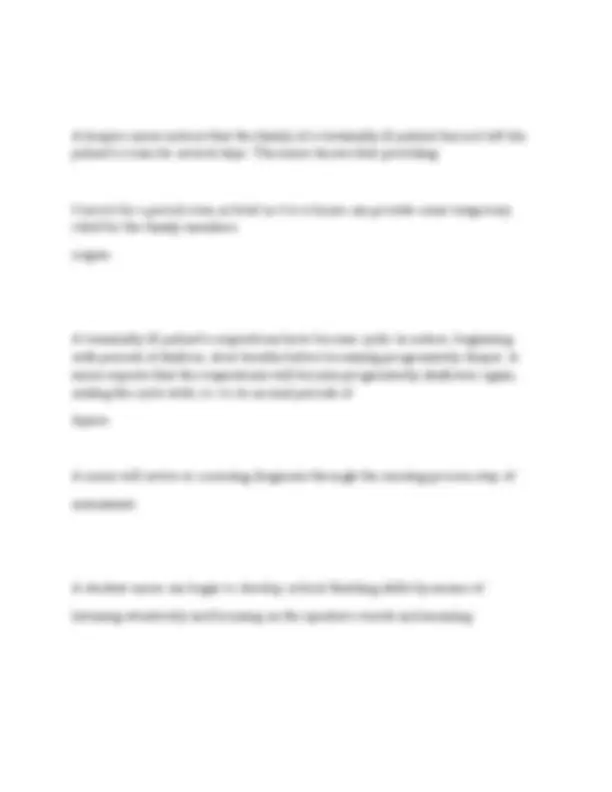
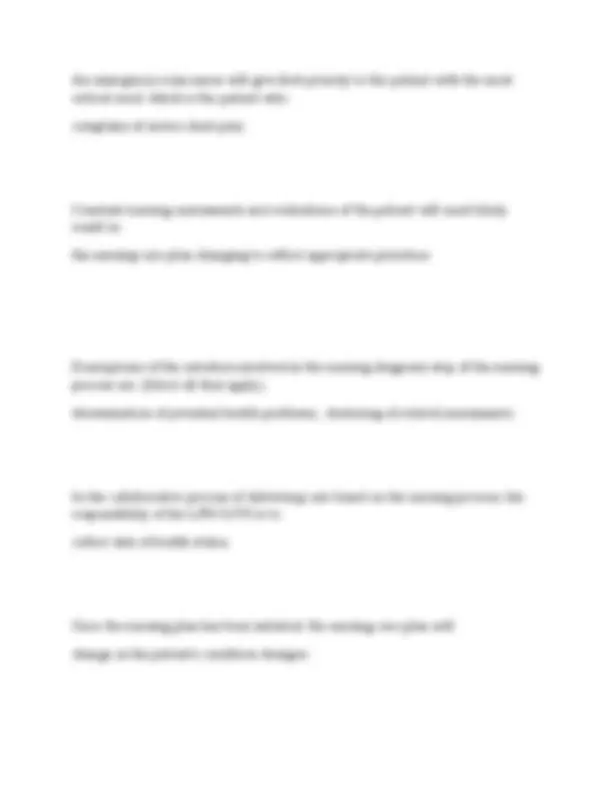
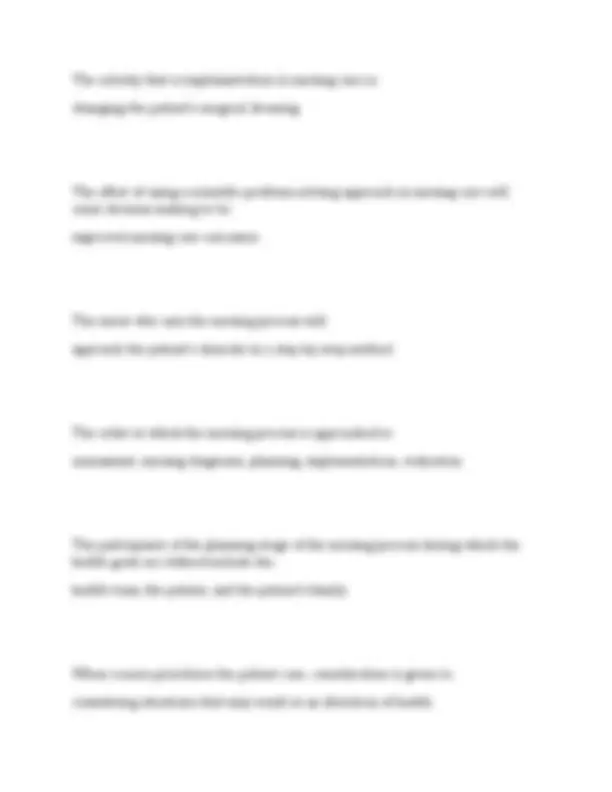
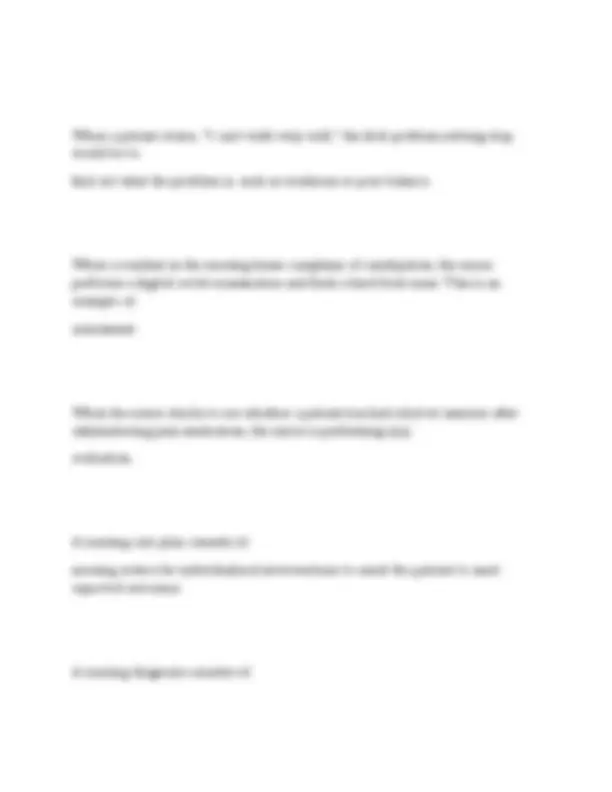
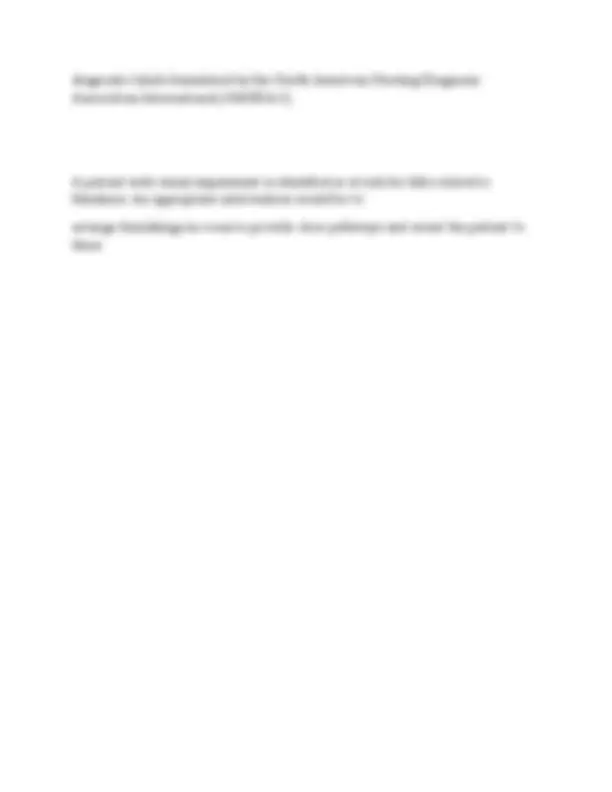


Study with the several resources on Docsity

Earn points by helping other students or get them with a premium plan


Prepare for your exams
Study with the several resources on Docsity

Earn points to download
Earn points by helping other students or get them with a premium plan
Community
Ask the community for help and clear up your study doubts
Discover the best universities in your country according to Docsity users
Free resources
Download our free guides on studying techniques, anxiety management strategies, and thesis advice from Docsity tutors
NUR 104 FINAL EXAM 2025|ACTUAL 180 QUESTIONS AND ANSWERS|GRADED A+
Typology: Exams
1 / 43

This page cannot be seen from the preview
Don't miss anything!




































An elderly patient with a medical diagnosis of chronic lung disease has developed pneumonia. She is coughing frequently and expectorating thick, sticky secretions. She is very short of breath, even with oxygen running, and she is exhausted and says she "can't breathe." Based on this information, an appropriately worded nursing diagnosis for this patient is Airway clearance, ineffective, related to lung secretions as evidenced by cough and shortness of breath. During the assessment phase of the nursing process, the nurse gathers, organizes, and documents data in a logical database. The statements that are correctly stated as expected outcomes are: (Select all that apply.) Patient will be able to ambulate using a walker independently within 3 days., Patient will perform active range of motion (ROM) of her upper extremities independently every 4 hours. A nurse is caring for a patient with a medical diagnosis of right lower lobe pneumonia. The patient is expectorating thick green mucus, has an oxygen
saturation level of 90%, and has audible crackles in the base of the right lung. An appropriate nursing diagnosis for this patient is: Airway clearance, ineffective, related to retained secretions as evidenced by expectoration of thick green mucus, oxygen saturation level of 90%, and audible crackles in the base of the right lung. A nursing care plan consists of: nursing orders for individualized interventions to assist the patient to meet expected outcomes. A nursing diagnosis consists of: diagnostic labels formulated by the North American Nursing Diagnosis Association-International (NANDA-I). A patient has a nursing diagnosis of Imbalanced nutrition: less than body requirements, related to mental impairment and decreased intake, as evidenced by increasing confusion and weight loss of more than 30-pounds over the last 6 months. An appropriate short-term goal for this patient is to: eat 50% of six small meals each day by the end of 1 week.
The major goal of the admission interview (usually performed by the RN) is to: identify the patient's major complaints. The nurse clarifies that nursing orders are also called: interventions. The nurse designs the goals for patients in long-term facilities to be: long-term. The nurse performing an admission interview on an elderly person should: allow more time for a response to questions. The nurse should make a point when closing the initial interview to: (Select all that apply.) summarize the problems discussed., thank the patient for his or her time. The nursing diagnoses that has the highest priority is:
Airway clearance, ineffective, related to neuromuscular disorder as evidenced by choking and coughing while eating. The statements that are correctly stated as expected outcomes are: (Select all that apply.) Patient will be able to ambulate using a walker independently within 3 days., Patient will perform active range of motion (ROM) of her upper extremities independently every 4 hours. When the patient complains of nausea and dizziness, the nurse recognizes these complaints as _______ data. subjective A review of a patient's nursing care plan before beginning care allows the nurse to: use critical thinking skills to organize care for the patient At the 7:00 AM change-of-shift report, the nurse receives the report that patient A had a sleepless night related to pain and just fell asleep after an increased pain medication administration one-half hour ago. Patient B, who is scheduled for surgery at 8:30 AM, is also sleeping. How would an organized nurse plan the early morning activities? Prep patient B now; allow patient A to sleep.
developed by an RN in an acute care setting. Preparing a patient for a diagnostic test, and telling the patient what to expect during and after the test, is considered: An independent nursing action. The nurse administering a medication to a patient is performing an intervention that is a(n) _____ nursing action. dependent The nurse compares actual nursing outcomes to the expected nursing outcomes in order to: determine if progress is made or to determine if revisions are needed. The nurse documents interventions periodically during the shift in nurses' notes primarily to: Indicate that the nursing care plan has been implemented. The nurse evaluates that the patient has met the outcome of feeding himself independently. The nurse should:
Document the ability to self-feed and mark the nursing diagnosis as resolved. The nurse giving a patient a back massage is performing an intervention considered to be a(n) _____ nursing action. independent The nurse is assessing a patient who just returned from a bowel resection 1 hour ago. The nurse notes a dressing over the suture line that is wet with sero- sanguineous drainage. The nurse should initially: Reinforce the wet dressing and document. A clinic nurse is documenting in a patient chart about the pain that brought the patient to seek medical attention. The best description is: "Peri-umbilical sharp pain at pain level of 7 to 8 for last 3 hours, started 2 hours after lunch. No relief from antacids." A nurse begins the shift caring for a patient who has just returned from the recovery room after surgery. It is most important to document: an initial assessment of the patient and a plan based on the needs of the patient as assessed at the beginning of the shift.
A resident in a skilled nursing facility for a short-term rehabilitation following a hip replacement says to the nurse, "I don't want to have you draw any more blood for those useless tests." When the nurse fails to convince the patient to have the blood drawn, the most appropriate documentation would be: Refuses to have blood drawn; says tests are 'useless.' Doctor notified." A student nurse is assigned to a clinical unit on which one of the patients is a nationally known celebrity. The student reads the chart to find out why the celebrity is being treated. The student who is not the assigned caregiver is: violating the confidentiality of the patient's record. Advantages of source-oriented or narrative charting include all of the following except that it: encourages documentation of normal and abnormal findings. If an agency is using computer-assisted charting, the nurse is responsible for: guarding the confidentiality of the patient record by not leaving the patient screen "on" if he leaves the terminal.
In an agency that uses specific protocols (Standard Procedures) and charting by exception, an advantage compared with using traditional (narrative or problem- oriented) charting is that charting by exception: highlights abnormal data and patient trends. The method of computer-assisted charting: (Select all that apply.) improves communication between departments., speeds reimbursement for services., allows electronic records to be retrieved more quickly., allows entries to be made at point of care. The nurse understands that a face sheet contains information pertaining to: patient data, including patient's name, address, phone number, insurance company, and admitting diagnosis. The nurse uses the flow sheet in patient care documentation primarily to track routine assessments, treatments, and frequently given care. The nurse with a patient who complains of severe pain documents every 15 minutes about the steps taken to try to relieve the pain (without success). The nurse also documents the time and content of two calls made to the patient's physician requesting that the physician examine the patient for unexpected complications. This documentation by the nurse is likely to:
If a patient has several nursing diagnoses, the nurse will first: prioritize the nursing problems according to Maslow's hierarchy of needs. A nursing diagnosis identifies: (Select all that apply.) patient's response to illness., related signs and symptoms., causative factors., potential risk for health problems. A nursing diagnosis consists of: diagnostic labels formulated by the North American Nursing Diagnosis Association-International (NANDA-I). A nursing care plan consists of: nursing orders for individualized interventions to assist the patient to meet expected outcomes. A nurse will arrive at a nursing diagnosis through the nursing process step of: assessment.
Descriptions of the activities involved in the nursing diagnosis step of the nursing process are: (Select all that apply.) determination of potential health problems., clustering of related assessments into a concept map The planning stage of writing a care plan consists of deciding: What is realistic for the patients condition The participants of the planning stage of the nursing process during which the health goals are defined include the: health team, the patient, and the patient's family. You are a nurse on the adult med surge floor of a community hospital. The nurse reporting off to you tells you that she received an open chole from post op at 0200 this AM. Her VS have been stable during the shift and she has a 4 inch closed surgical abdominal wound. She was medicated for pain at 0530 with good relief. You review her care plan and do a quick assessment. Which activities represent an implementation of the plan of care? changing the patient's surgical dressing., assembling needed supplies, Checking the MD order
determine if outcomes have been reached and the goals are met., compare actual outcomes with expected outcomes., confirm that nursing interventions are effective. Put the next nursing actions in order of priority for caring for Jon. Notify the charge nurse 2 Document all of the above in a narrative note. 5 Monitor Jon and continue to evaluate his pain control 4 Amend the care plan as soon as you have time 6 Call the doctor and report that they Tylenol was not effective
Administer the new medication as ordered 3 Once the nursing plan has been initiated, the nursing care plan will: change as the patient's condition changes. When a patient states, "I can't walk very well," the first problem-solving step would be to: find out what the problem is, such as weakness or poor balance. Which of the following items could be the responsibility of the LPN/LVN for a patient's plan of care? (Select all that apply.) Collect data., Assisting the RN with nursing interventions., Assist the RN with evaluation of the patient's response to nursing interventions., Document nursing care. A nurse is caring for a patient with a medical diagnosis of right lower lobe pneumonia. The patient is expectorating thick green mucus, has an oxygen
A short-term goal is expected to be evaluated by staff before discharge. So a long- term goal will be evaluated by whom? family practice office in follow up appointment, home health nurse, staff in a long term care facility A patient with visual impairment is identified as at risk for falls related to blindness. An appropriate intervention would be to: arrange furnishings in room to provide clear pathways and orient the patient to these. After the admission assessment is completed, on subsequent shifts or days, the nurse: assesses the patient briefly in the first hour of the shift. Aside from the information obtained from the patient (primary source) in the admission interview, the nurse will also access: (Select all that apply.) the patient's family., the admission note., the physician's history and physical., an observation of the patient for non-verbal clues.
In an acute care facility, a nursing care plan is usually reviewed and updated: every 24 hours. The nurse performing an admission interview on an elderly person should: allow more time for a response to questions. The nurse should make a point when closing the initial interview to: (Select all that apply.) summarize the problems discussed., thank the patient for his or her time. Which of the following interventions holds the highest priority according to Maslow? Changing urine soaked linens The nursing diagnoses that has the highest priority is: Airway clearance, ineffective, related to neuromuscular disorder as evidenced by choking and coughing while eating. The statements that are correctly stated as expected outcomes are: (Select all that apply.)